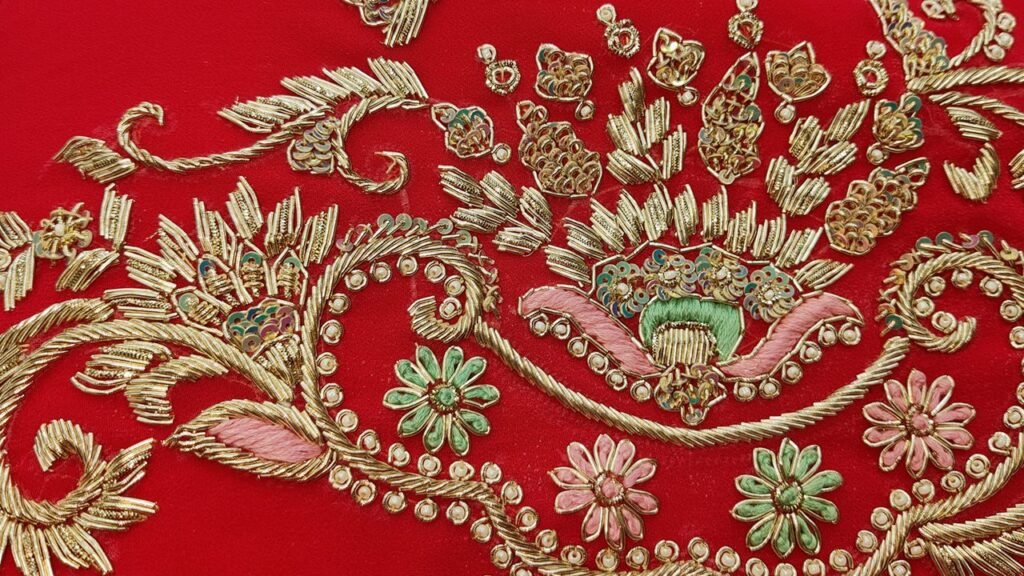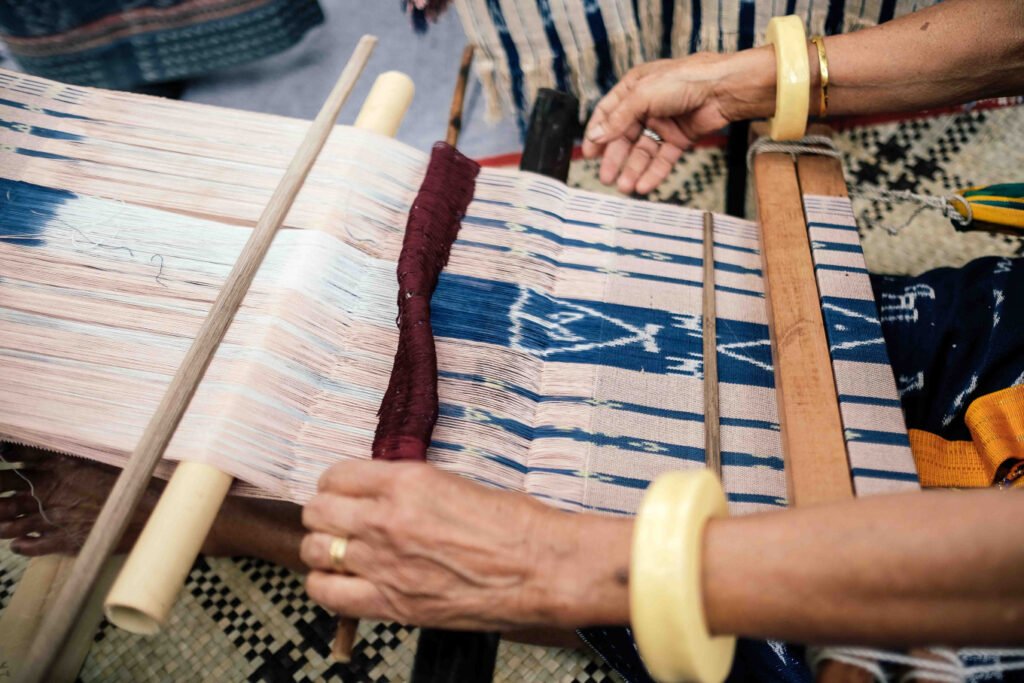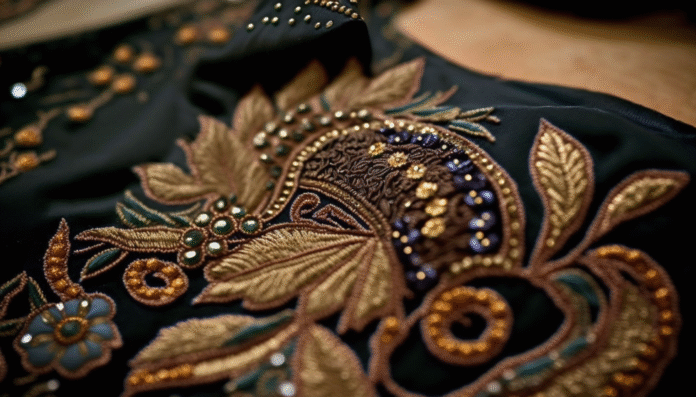Unveiling Lucknow’s Royal Threads: How Chikankari & Zardozi Embroidery Crafted Indian Culture
India’s rich cultural fabric is incomplete without the delicate threads of its traditional embroidery forms. Among them, Lucknow’s Chikankari and Zardozi embroidery stand out as regal expressions of finesse, heritage, and identity. These two forms, born and nurtured in the cultural womb of Awadh (modern-day Lucknow), have stitched together generations, tales, and traditions.
Let’s travel through time to explore how these crafts evolved, what makes them timeless, and how they continue to shape India’s fashion narrative even today.
Chikankari Embroidery: The Whispering Thread of Elegance
Chikankari is the art of delicate hand embroidery, traditionally done on light fabrics like muslin, cotton, and georgette using white thread. The word “Chikan” is derived from the Persian word “chikan,” meaning “embroidery.” This craft is over 400 years old and believed to have been introduced by Empress Noor Jahan, the wife of Mughal emperor Jahangir.

The Technique
The process begins with printing the design on the fabric using washable dyes. Then, artisans skillfully use about 32 different types of stitches such as:
- Bakhiya (shadow work)
- Phanda (knotted stitch)
- Murri (grain stitch)
- Jali (net work)
Each stitch requires precision, patience, and years of experience. The artisans often work for 8–10 hours daily and take days—or even weeks—for a single piece.
The Symbolism of Chikan
Chikankari is not just embroidery; it is an expression of grace and subtlety. Worn by both royalty and commoners, it became a symbol of Lucknow’s Ganga-Jamuni tehzeeb (composite culture). Today, Chikankari is adored by designers globally and is frequently seen on fashion runways, bridal collections, and everyday ethnic wear.
Zardozi Embroidery: The Golden Embrace of Royalty
While Chikankari whispers elegance, Zardozi roars opulence. The word ‘Zardozi’ is Persian: ‘Zar’ means gold and ‘Dozi’ means embroidery. It refers to a type of metal embroidery that uses gold and silver threads, sometimes combined with pearls, beads, and stones. Originating in Persia, it flourished in India during the Mughal era, particularly under Emperor Akbar.

The Making of Zardozi
Zardozi is crafted by placing the fabric in a wooden frame and stitching the patterns using dabka (coiled wires), kasab (metallic threads), gota, and badla work. The designs are often inspired by Mughal motifs such as:
- Floral vines
- Peacocks
- Royal emblems
- Mythical creatures
Zardozi was traditionally used to adorn royal robes, wall hangings, scabbards, and ceremonial furnishings. Today, it’s found on bridal lehengas, sherwanis, dupattas, and even luxury bags and shoes.
The Craft Economy of Lucknow
Both Chikankari and Zardozi are labor-intensive crafts that sustain thousands of artisans in and around Lucknow. Entire families are involved in the process—designing, stitching, washing, finishing, and selling. Yet, the reality for many artisans remains grim. Low wages, lack of recognition, and the threat of machine-based duplication have challenged this sector.

Craft Preservation Initiatives
- GI Tags: Both crafts have been granted Geographical Indication (GI) tags by the Government of India.
- Fashion Collaborations: Designers like Abu Jani Sandeep Khosla and Manish Malhotra promote these arts on global platforms.
- Training Workshops: NGOs and craft schools in Lucknow offer courses to preserve and teach younger generations.
The Mughal Legacy Woven in Thread
These embroidery forms were deeply integrated with the Mughal court and Nawabi culture. In many miniature paintings, nobles and queens are shown wearing clothes adorned with these very stitches. Chikankari represents elegance—meant for warm climates, while Zardozi symbolizes winter warmth and grandeur.
Contemporary Relevance: Fashion Meets Heritage
In an age of fast fashion, these handcrafted techniques have made a surprising comeback. Several fashion houses in India and abroad are now reviving traditional embroidery and incorporating it in modern designs like:
- Chikan crop tops, jumpsuits, and palazzos
- Zardozi on denim jackets and clutch bags
- Fusion bridal wear with both crafts combined
Online platforms like FabIndia, Okhai, and Amazon Karigar are enabling local artisans to reach global markets. Instagram stores and pop-up exhibitions are also playing a key role in the revival.
Why We Must Celebrate and Preserve These Crafts
These are not just art forms, but cultural memories stitched into fabric. Every piece tells a story of history, resilience, and identity. Losing them would mean erasing parts of our own heritage.
How You Can Support
- Buy directly from verified artisan platforms
- Attend local handloom & craft exhibitions
- Support brands that promote slow fashion
- Educate others about the importance of handmade arts
Conclusion: Threads That Bind Us
Chikankari and Zardozi embroidery are not just Lucknow’s treasures, but India’s pride. As the modern world leans into sustainability and cultural authenticity, these crafts stand at the perfect crossroad—blending history with fashion, and identity with innovation.
To cherish these crafts is to cherish India’s soul—woven intricately in white cotton and golden zari threads.
📌 Read Another Masterpiece from India’s Artistic Vault:
👉 The Forgotten Frescoes of Shekhawati Haveli Walls
For More Details go this Wikipedia Link
Tags: chikankari embroidery, zardozi embroidery, lucknow crafts, indian textiles, hand embroidery, cultural fashion, indian heritage, traditional arts, mughal embroidery, craft history
